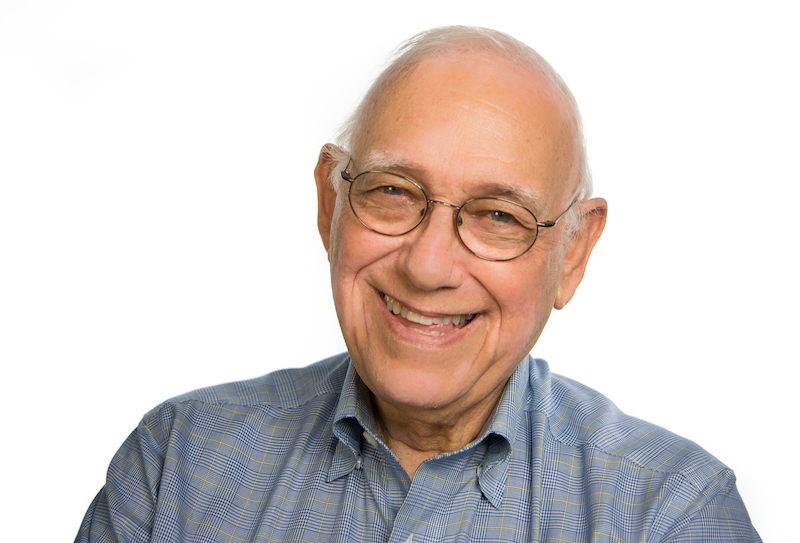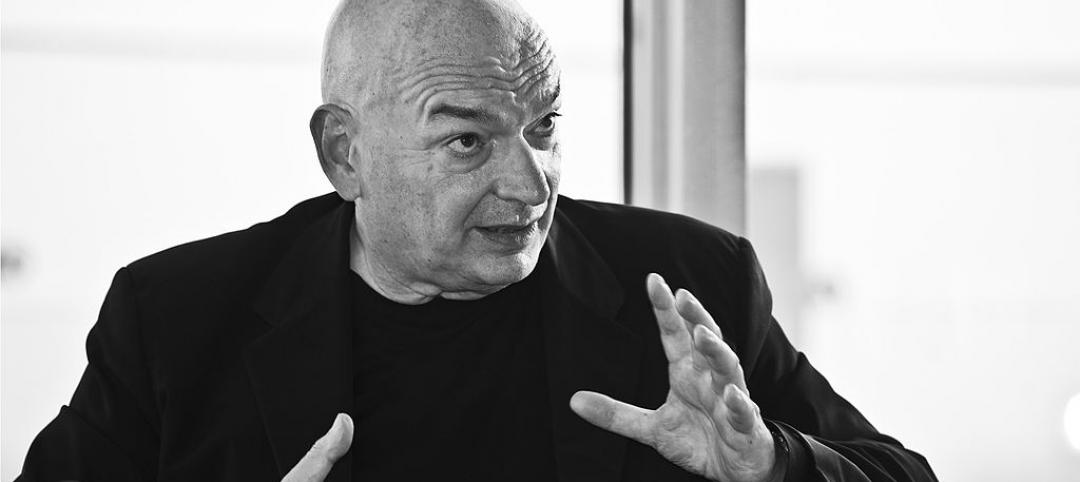The Board of Directors and the Strategic Council of the American Institute of Architects (AIA) voted today to award the 2018 AIA Gold Medal to James Stewart Polshek, FAIA. The Gold Medal honors an individual or pair of architects whose significant body of work has had a lasting influence on the theory and practice of architecture. Polshek will be honored at the AIA Conference on Architecture 2018 in New York City.
Born in Akron, Ohio, Polshek earned a Master of Architecture degree from Yale in 1955. In 1963 Polshek started his first architecture firm, James Stewart Polshek Architect. His firm evolved through multiple iterations — settling in 2010 on Ennead Architects. Polshek has fostered an environment wherein design excellence, effective collaboration and rigorous research work in concert to create enduring architecture. His unparalleled vision and leadership has earned the firm countless accolades, including more than 200 design awards, the 1992 AIA Architecture Firm Award, and 15 National Honor Awards for Architecture.

Concurrent to leading one of the nation's most recognized firms, Polshek served as dean of Columbia University’s Graduate School of Architecture, Planning and Preservation from 1972 to 1987. At the time, Columbia played a central role in the debate over style and meaning during a period in which architecture was being fundamentally questioned. His collaborative spirit led to a complete revision of the school’s curriculum and direction that, in turn, reversed its decline and attracted world-class faculty. Polshek’s 1987 restoration and renovation of New York’s Carnegie Hall began with a master plan that helped establish his enduring approach to revitalization. A complete restoration of the hall’s original details as well as the implementation of new ones —lighting, graphics, and a new marquee — were coupled with a heavy dose of advocacy for landmark buildings threatened by market forces.

In Washington, D.C., the 645,000-square-foot Newseum/Freedom Forum Headquarters, completed in 2008, is a monument to journalism and free speech. The architectural expression of the institution’s mission manifests in a symbol of openness: a 4,500-square-foot clear glass “window” woven into the fabric of the city’s Penn Quarter. Polshek’s National Museum of American Jewish History in Philadelphia, just a block from Independence Hall, references the immigrant experience in America through two interlocking volumes of opaqueness and transparency. The museum’s high-profile historical context bolsters its efforts to inspire people of all backgrounds.
Polshek’s sensitivity as an architect and his willingness to give credit to others — whether they be his clients, staff or collaborators — have helped restore the promise that architecture can be an uplifting force in the world. Everywhere that he has worked, and throughout his eloquent writings, he has raised the level of discussion while pursuing an unambiguous goal of architecture as a healing art.

Polshek is the 74th recipient of the Gold Medal. He joins the ranks of such visionaries as Frank Lloyd Wright (1949), Louis Sullivan (1944), Le Corbusier (1961), Louis I. Kahn (1971), I.M. Pei (1979), Thom Mayne (2013), Julia Morgan (2014), Moshe Safdie (2015), Denise Scott Brown & Robert Venturi (2016), and Paul Revere Williams (2017). In recognition of his legacy to architecture, Polshek’s name will be chiseled into the granite Wall of Honor in the lobby of the AIA headquarters in Washington, D.C.

Related Stories
| Aug 6, 2014
Multifamily Sector Giants: Younger consumers, Sunbelt renaissance energize multifamily housing [2014 Giants 300 Report]
Multifamily housing construction is expected to remain relatively strong throughout 2014. Starts picked up in 2013, with completions due to catch up this year, finally approaching pre-recession levels, according to BD+C's 2014 Giants 300 Report.
| Aug 5, 2014
Risk scanning: A new tool for managing healthcare facilities
Using well-known risk analytics applied to pre-existing facility data, risk scanning can provide a much richer view of facility condition more consistent with actual management decision making.
| Aug 5, 2014
Shigeru Ban-designed Aspen Art Museum will open doors to public this week
After 18 month of planning and construction, the museum will open its new Shigeru Ban-designed facility to the public on August 9.
| Aug 5, 2014
Will driverless cars kill the parking structure?
A report from Deloitte highlighted how driverless cars could dramatically alter car ownership in the future, pushing the pendulum from ownership to rentals and ride sharing.
| Aug 5, 2014
K-12 School Sector Giants: Pent-up demand finally produces movement in schools market [2014 Giants 300 Report]
After a long period of anemic performance, with growth mostly driven by renovations and additions, the K-12 sector is showing renewed interest in new construction, according to BD+C's 2014 Giants 300 Report.
| Aug 4, 2014
Jean Nouvel commissioned to design Islam Museum next to WTC
El-Gamal's plans has been dubbed controversial by many industry professionals.
| Aug 4, 2014
Facebook’s prefab data center concept aims to slash construction time in half
Less than a year after opening its ultra-green, hydropowered data center facility in Luleå, Sweden, Facebook is back at it in Mother Svea with yet another novel approach to data center design.
| Aug 4, 2014
Retail Giants: Grocery-anchored centers, trophy malls among hot retail developments [2014 Giants 300 Report]
Despite the rapid growth of online shopping, the 'bricks and mortar' retail sector is faring quite well, headed by power centers, grocery-anchored centers, and trophy malls, according BD+C's 2014 Giants 300 Report.
| Aug 4, 2014
BIM Giants: Firms enhance BIM/VDC with advanced collaboration tools [2014 Giants 300 Report]
Cloud-based data sharing, rapid iterative design, and cross-discipline collaboration are among the emerging trends in the BIM/VDC field, according to BD+C's 2014 Giants 300 Report.
| Aug 4, 2014
7 habits of highly effective digital enterprises
Transforming your firm into a “digital business” is particularly challenging because digital touches every function while also demanding the rapid development of new skills and investments. SPONSORED CONTENT

















